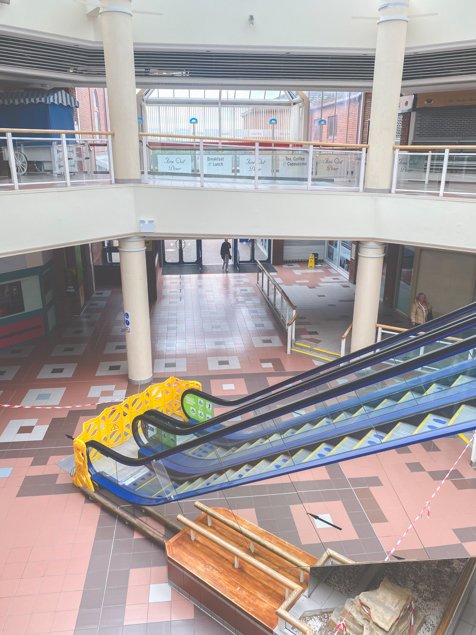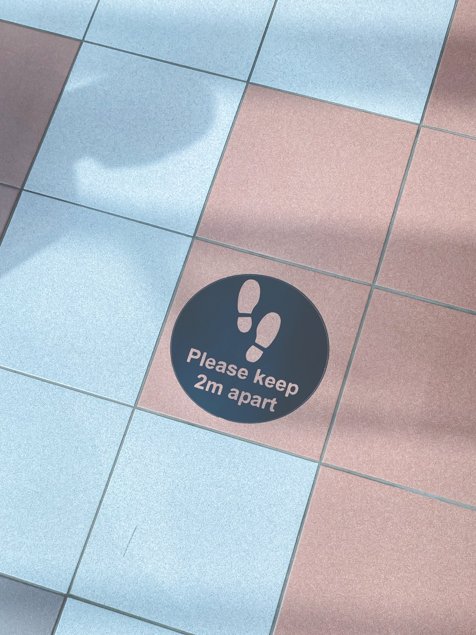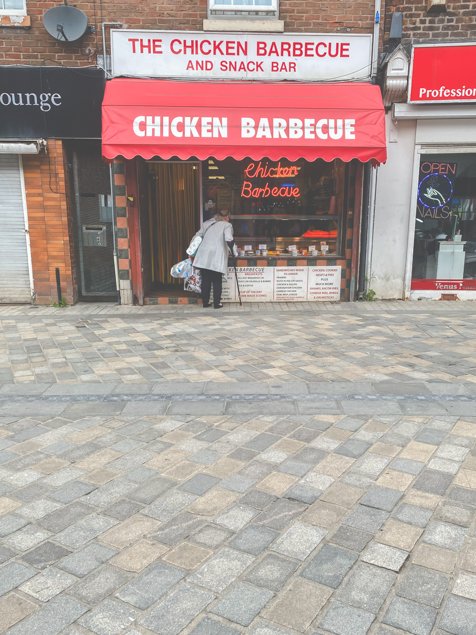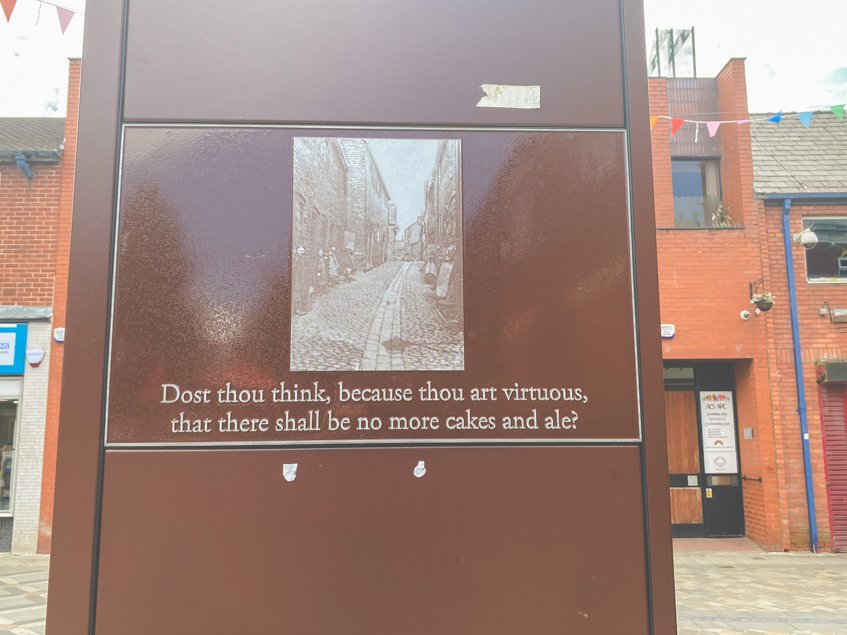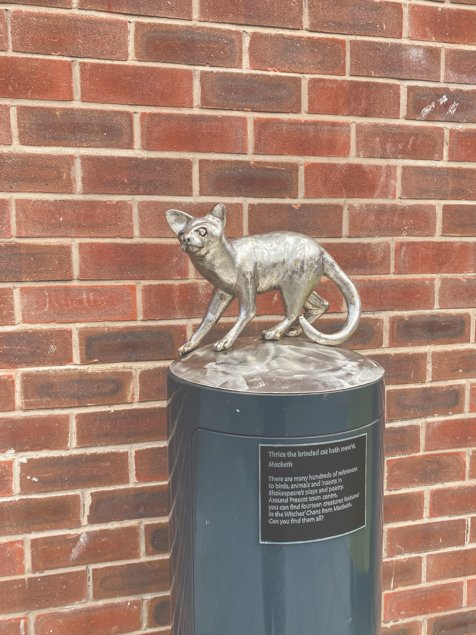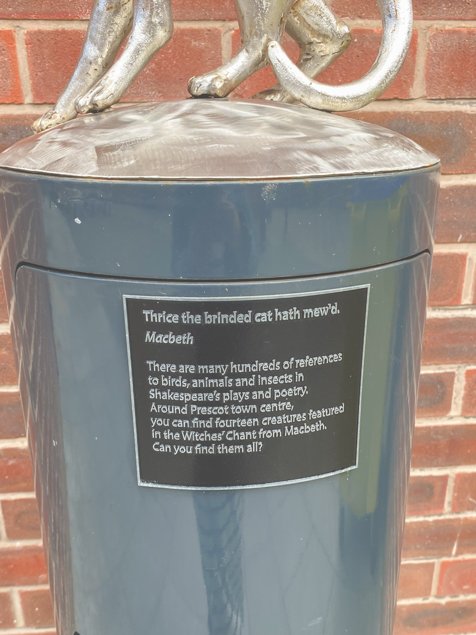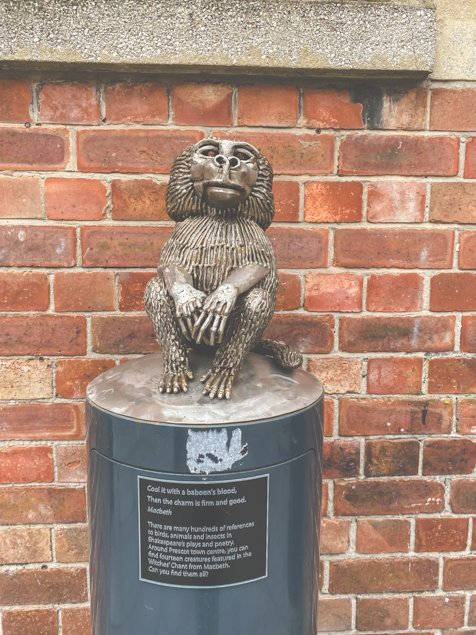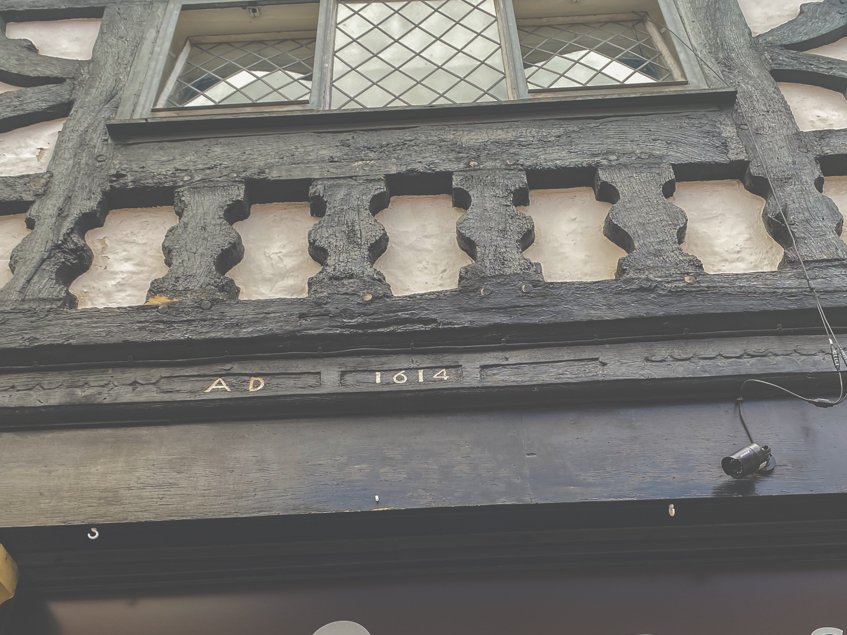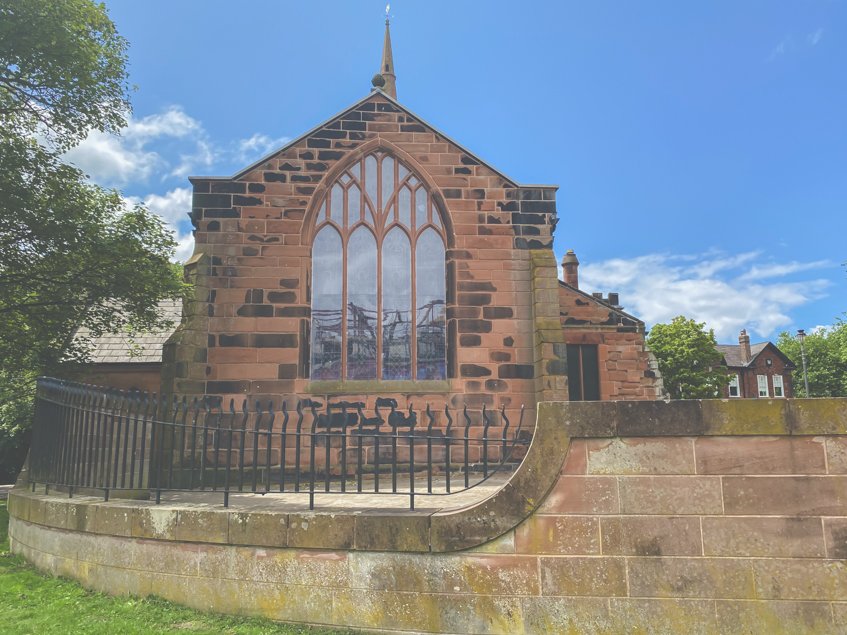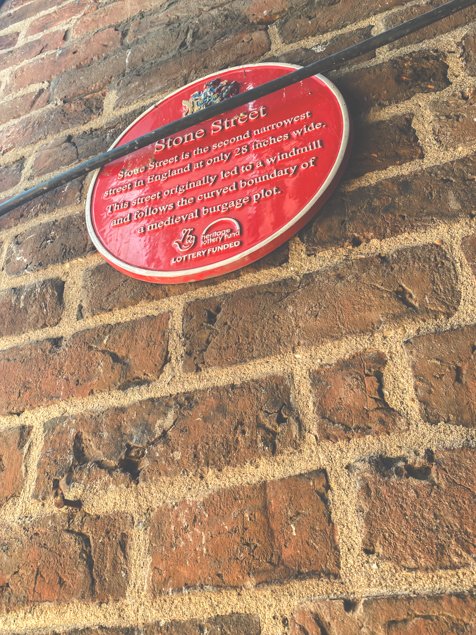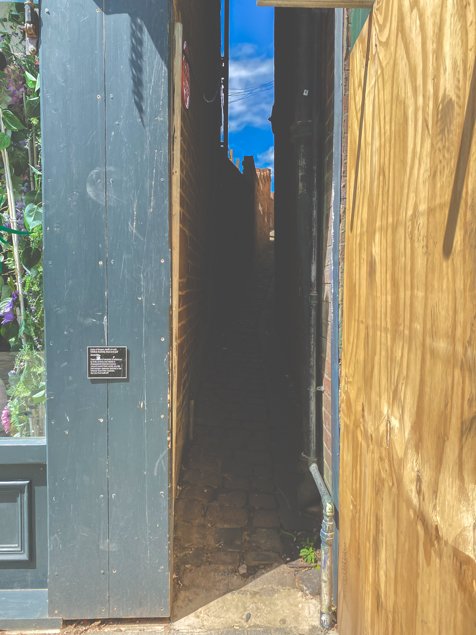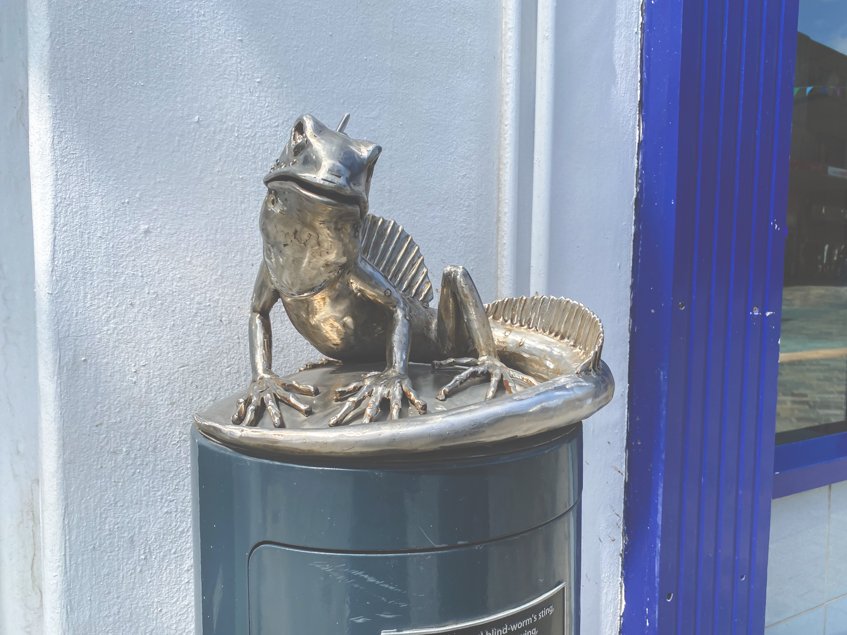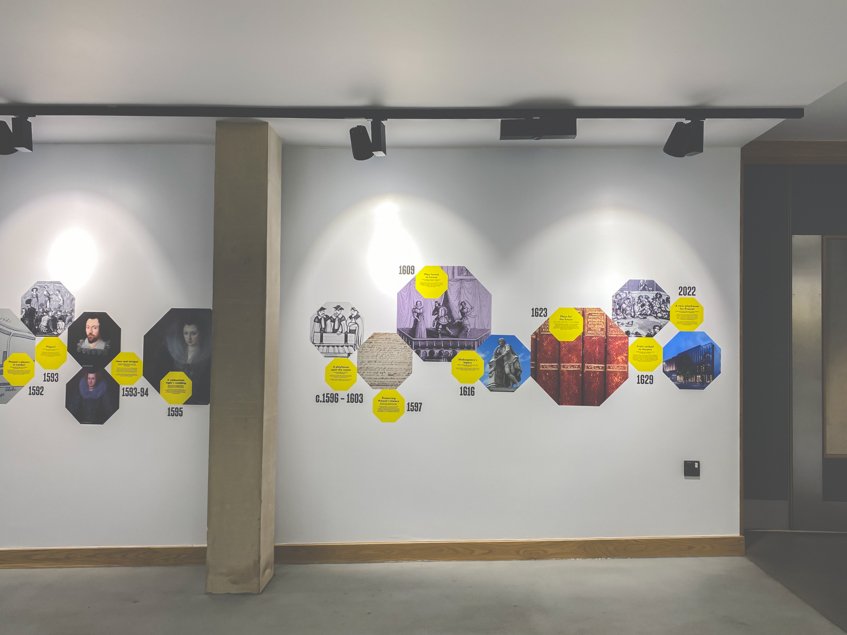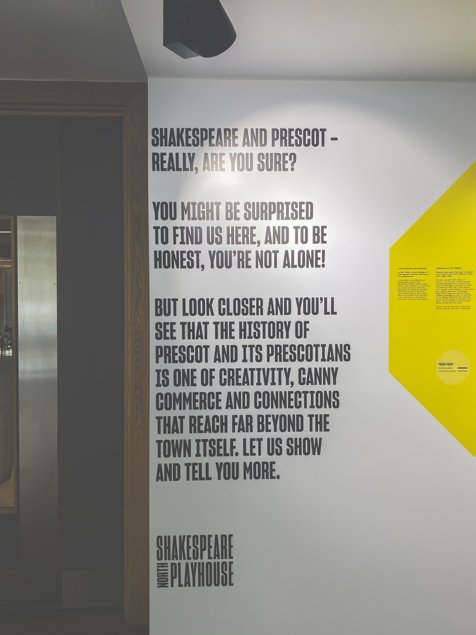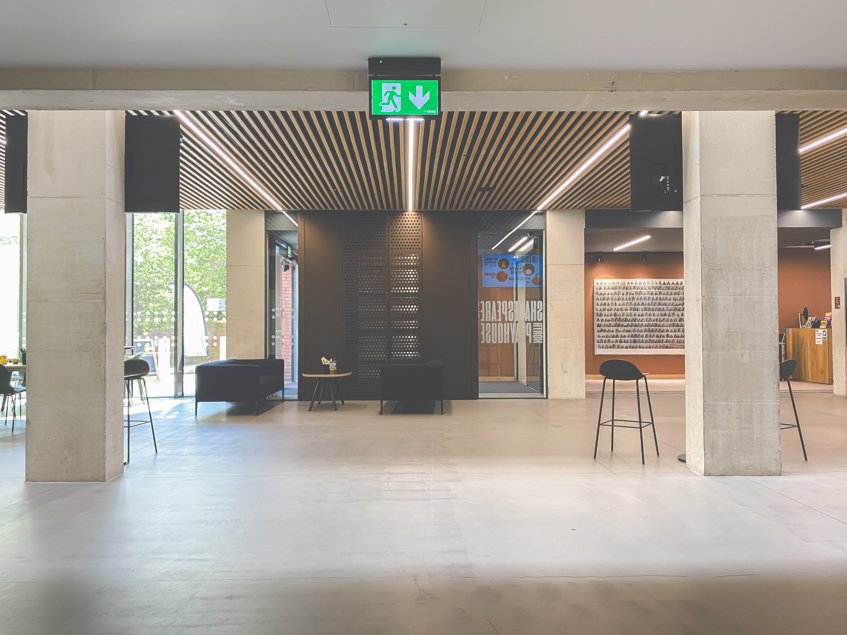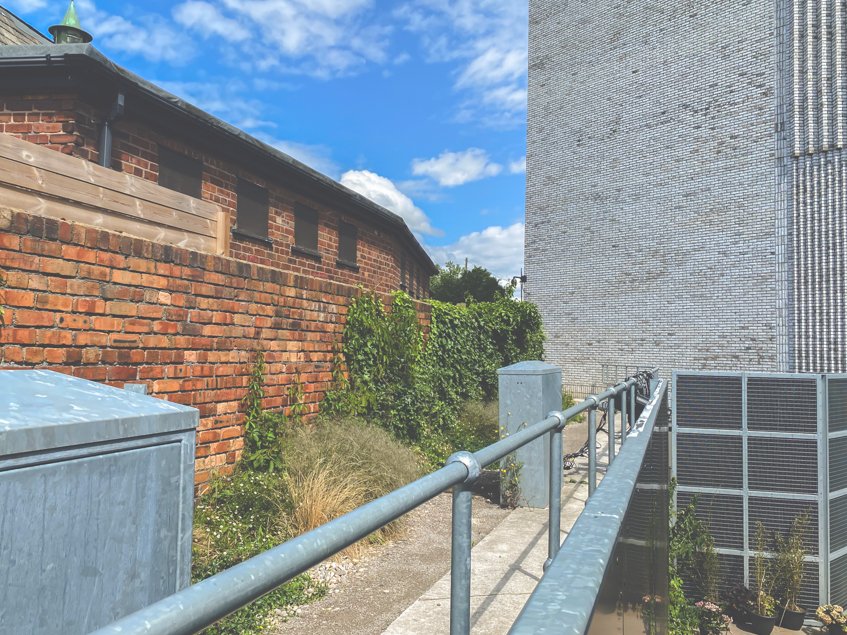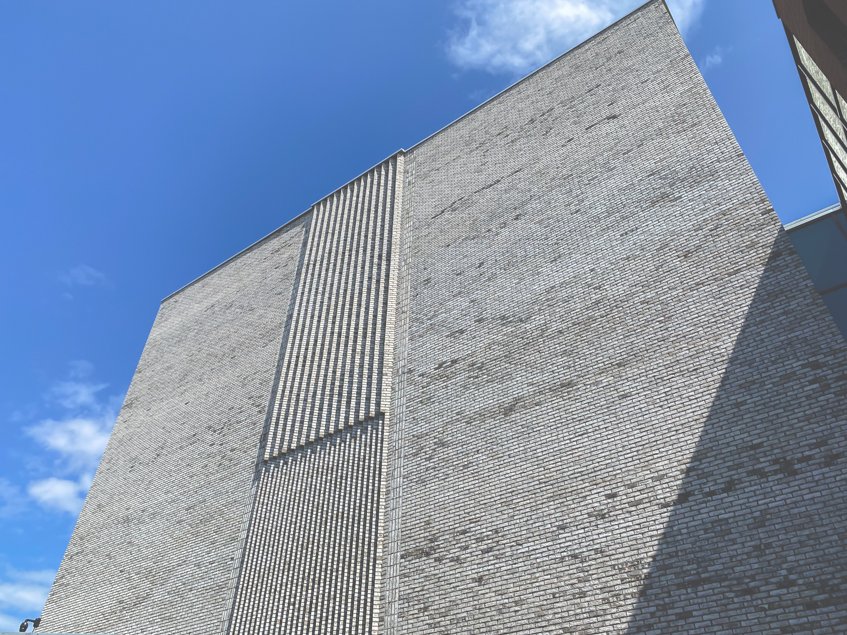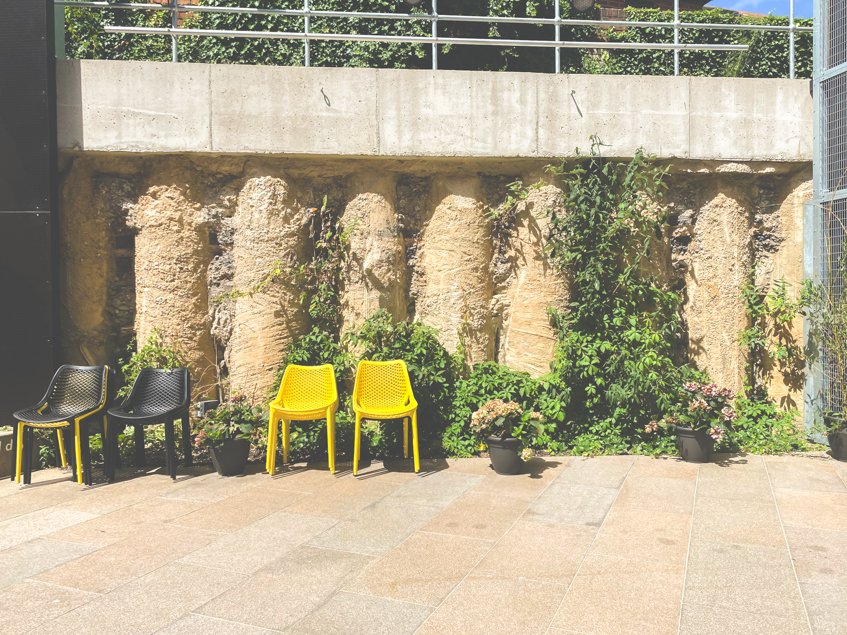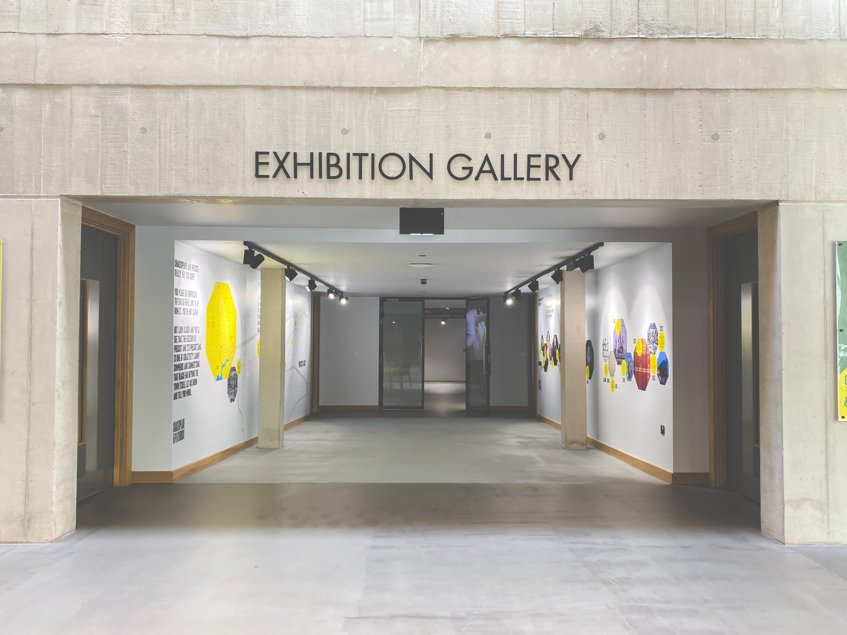Towns-Prescot & Shakespeare North- Knowsley.
Prescot, when I was growing up was somewhere else. You tended to pass through on the way to Knowsley Safari park or in later years, have a drink there on the way into Liverpool. I do remember the last night bus used to terminate in Prescot and you had to either get a taxi home or see if you could get some chips. At 3am sadly not.
Regardless, I just never really paid it any attention, unless I was going to the big Tesco. Which I do remember was built on part of the site of BICC. Go HERE to see what it used to look like.
I typed into google ‘is Prescot medieval?’ Well yes it is.
I knew about the Shakespeare North Playhouse being built as when I went years previous the car park I used to use was soon to become it.
Parking at the shopping centre which is liminal to say the least, Tears for Fears echoed around the 1980’s interior. Out onto the Main Street and my little map said I should learn about and look at all of these things.
‘Prescot is one of the oldest towns in Merseyside and it is believed that an early Christian church was established here in the 7th century. In medieval times Prescot was a thriving market town and the ecclesiastical centre of a large parish covering much of south west Lancashire.
The 18th century brought considerable changes to Prescot and the continued growth in a number of craft industries created one of the earliest centres of the Industrial Revolution. These craft industries were concentrated around watch making, tool making and the potteries, resulting in Prescot’s increased prosperity. The town also had close links with Liverpool’s expanding overseas trade and as a result became an important coaching centre on the Lancashire Turnpike System. As the old trades disappeared other industries replaced them and during the 20th century BICC was a big local employer, utilising the highly skilled watch making workforce. Prescot once had an unusual tradition known as the Perrying Ceremony. It involved the officers of the Court Leet throwing heated pennies from the windows of the Town Hall into the market place below. People would then scramble to pick them up. Whilst you’re walking the Prescot trail look out for Stone Street, officially the narrowest named street in the country.’
‘Along Ecclestone Street is evidence of Medieval Prescot, of note is number 30. Interestingly, the right hand gable is genuine 17th century and the left hand side is a 20th century copy. Some of the other shops, behind their modern frontages have remains of 17th century building.’
‘St. Mary’s Church is the only Grade I listed building in the borough of Knowsley, and dates predominantly from 1610. The church contains a number of items from earlier buildings including a C15 vestry, intricate woodcarvings, panelling and an Anglo- Saxon font. The tower and spire, added in the late 1720s are thought to be the work of a pupil of Sir Christopher Wren.’
Walking down through he town centre you can spot lots of statues. Each one represents an animal included in the Witches’ Chant in Macbeth.
Go HERE to find out why Prescot.
I really liked it and the shop and café are wonderful. I didn’t manage to see inside the theatre but I would love to see a show there one day. It’s very surprising just how much you don’t know about these towns. Even though it’s less than five miles away from where I live.



